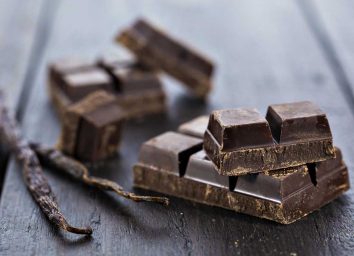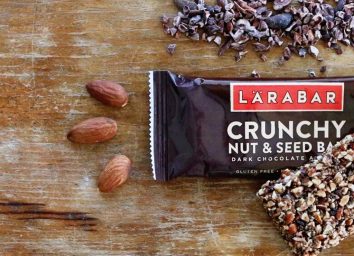The Best and Worst Chewing Gums—Ranked!
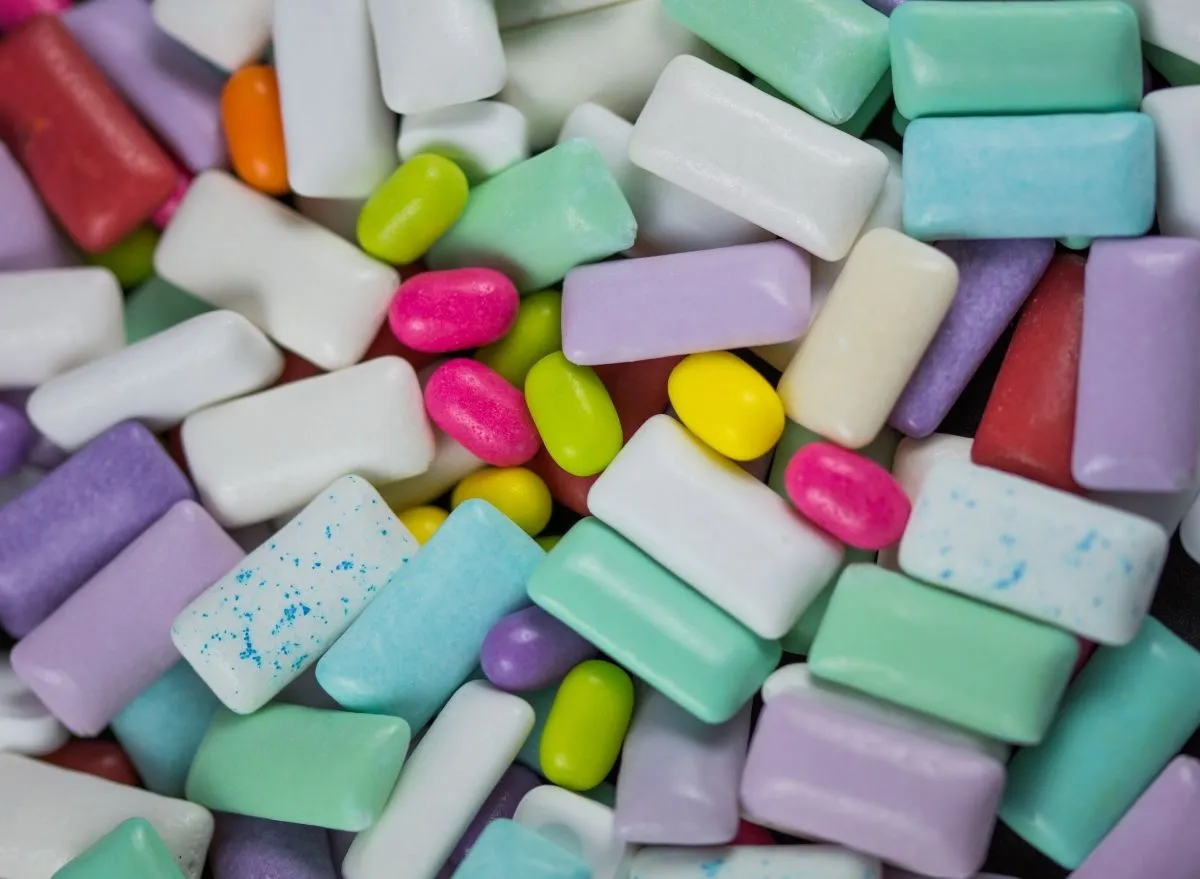
Sorry to burst your bubble, but even though you don't swallow it, there are some scary-sounding ingredients in chewing gum—along with unneeded sugars—that can still impact your health. If you're looking for something to gnaw on though, there are certain ingredients to look out for that are major red flags. While not every stick of chewing gum is harmful, there's a chance you're unknowingly choosing the wrong gums to mindlessly chew.
According to Michelle Hyman, MS, RD, CDN, a registered dietitian at Simple Solutions Weight Loss, there are three key components to watch out for when you find yourself in the candy aisle looking for gum to buy:
- Butylated hydroxytoluene, or BHT, a food additive that is banned in some other countries.
- Titanium Dioxide, which is more commonly seen as the active ingredient in sunscreen, is potentially carcinogenic (cancer-causing), according to Hyman.
- Artificial colors, which may trigger food allergies and are also possibly carcinogenic based on animal studies.
Constant gum-chewing also means you'll likely be swallowing a lot of excess air—a factor that can contribute to feeling bloated. It's also best to avoid gum if you suffer from TMJ disorders, a jaw-related health condition. But still, if you chews (ahem, choose) wisely, gum does have some health benefits.
"Sugarless gum has been shown to increase the flow of saliva, which helps clean teeth and cut back on plaque buildup between meals. This will reduce the acid—and therefore reduce decay," says Deborah Yarmush, DDS, a dentist in Walpole, Massachusetts. Yarmuch also recommends "avoid gum with sugar in it."
But it's not all doom and gloom! Gum can also help you steer clear of the mindless munchies, adds Bonnie Taub-Dix, MA, RDN, CDN, creator of BetterThanDieting.com and author of Read It Before You Eat It: Taking You from Label to Table.
"Gum can be like a speed bump to an unnecessary snack. If you feel kind of noshy but you know that there's no way that you're truly hungry, then a piece of gum could keep you from eating more than you really need," she says.
We know, this is all a little sticky trying to navigate, so we took a closer look at all the options out there for you. We went ahead and ranked different types of chewing gum, from the worst to the best option. And for more healthy eating tips, be sure you're stocked up on The 7 Healthiest Foods to Eat Right Now.
Read the original article on Eat This, Not That!
Bubble Yum Bubble Gum
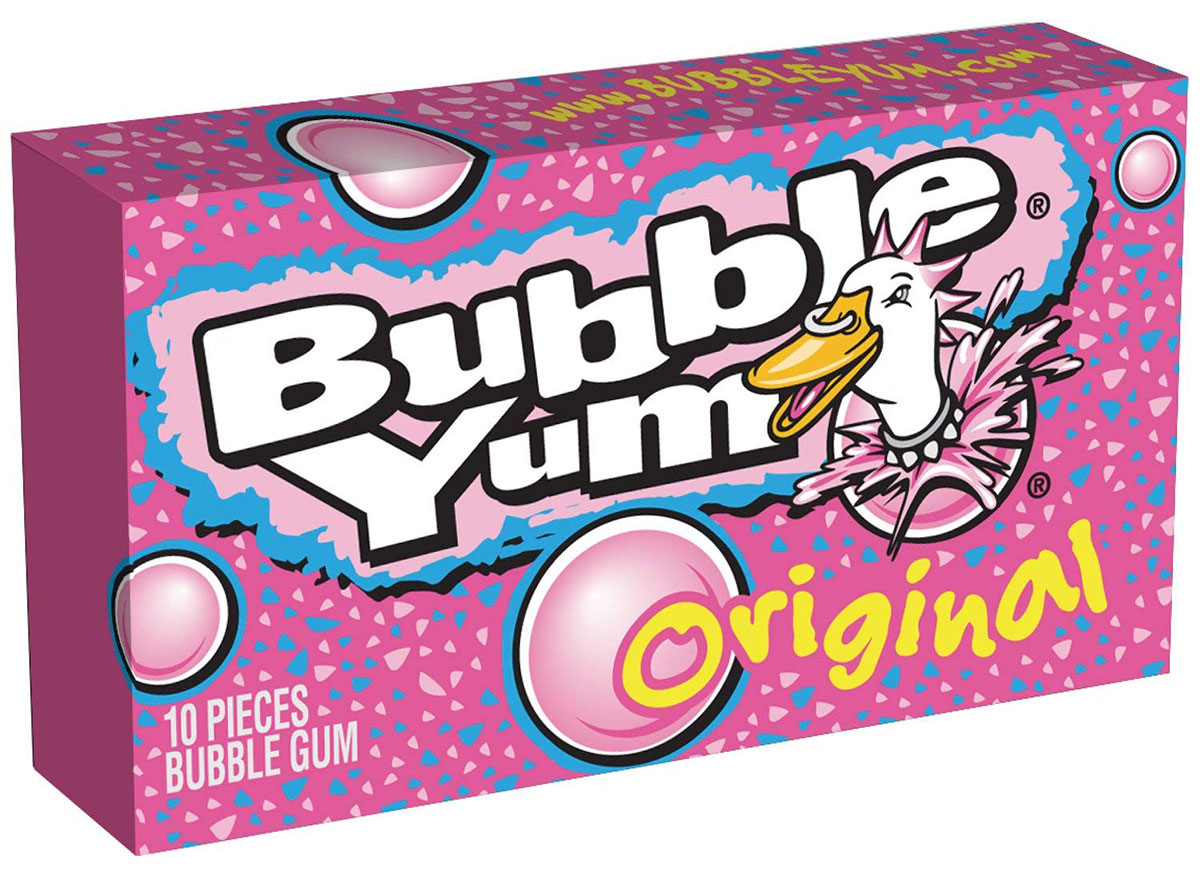
Sugar, corn syrup, and high fructose corn syrup make up the majority of this gum our experts say is closer to Bubble Yuck. BHT, artificial colors, and flavors round out the ingredient list.
"It's probably the sugar in gum that's the worst ingredient," Taub-Dix says. "Not only is it void of any value, but it also regularly connects with your teeth and could lead to cavities in addition to empty calories."
Hubba Bubba Bubble Tape Awesome Original
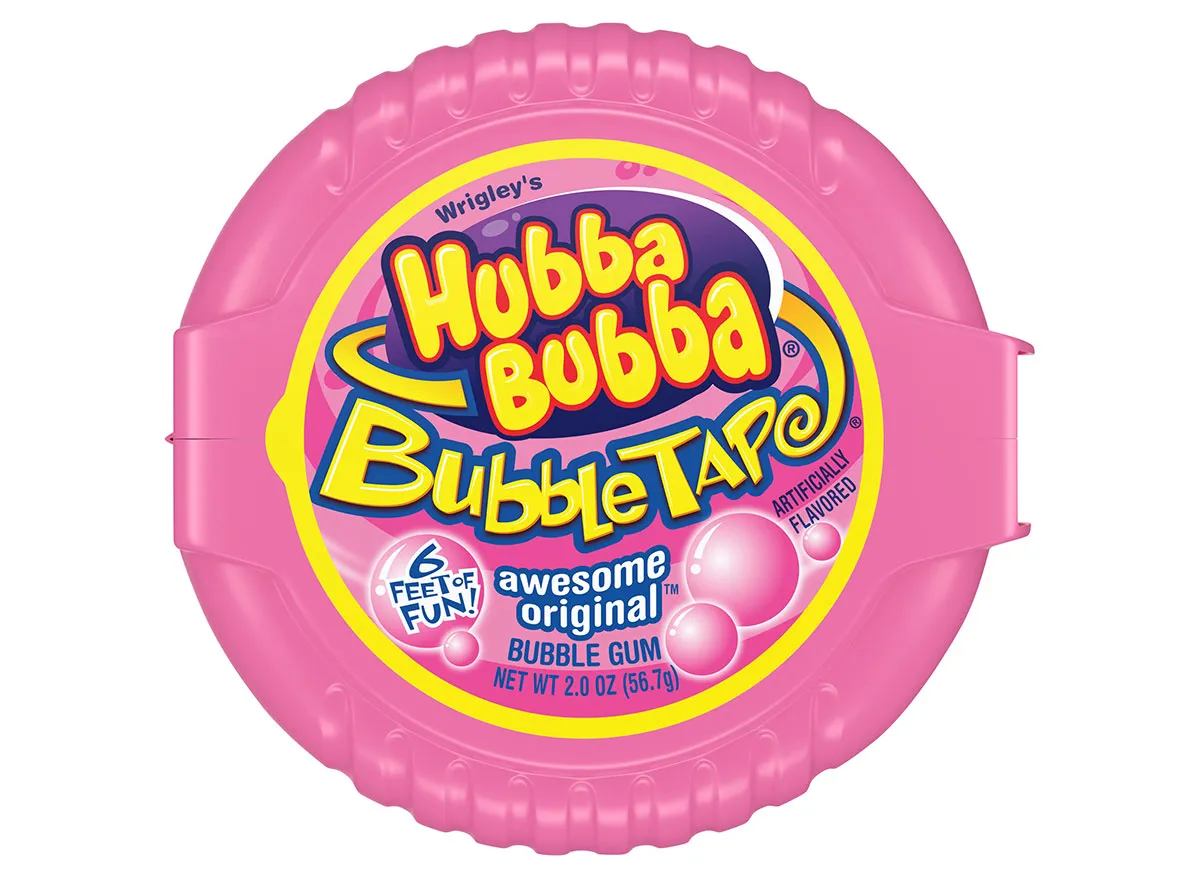
Does this kid-favorite taste sweeter than other gums to you? It should: sugar, corn syrup, acesulfame K (an artificial sweetener), and aspartame (aka Equal), give this tape its candy-like flavor. And as we know by now, while aspartame is a sweetener that's often added as a way to lower calorie and sugar count, it can have negative side effects such as feelings of anxiety and jitteriness, and a study found it can contribute to obesity, diabetes, and heart disease, too.
Dubble Bubble
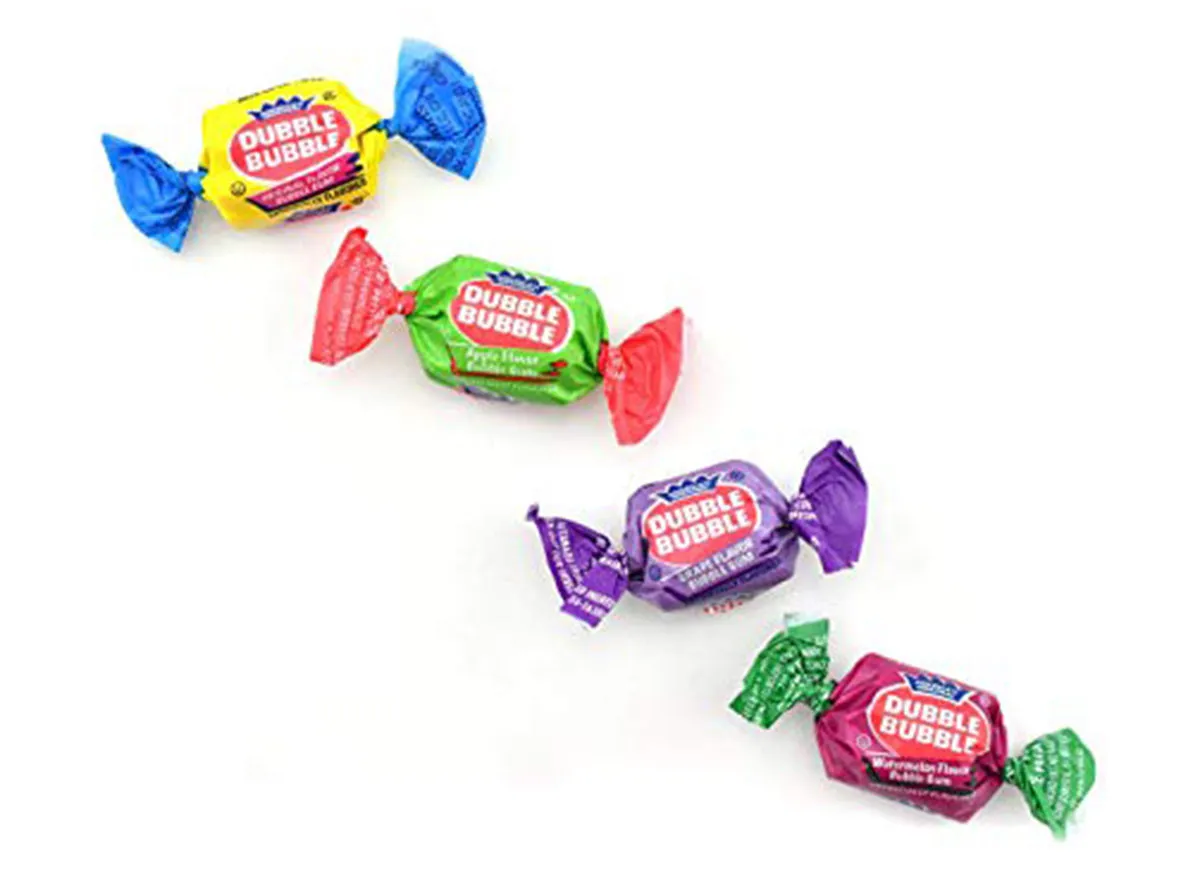
Cornstarch and BHT round out an ingredient list that begins with (you guessed it!) sugar, corn syrup, and high fructose corn syrup in this childhood favorite bubble gum.
Bazooka Bubble Gum
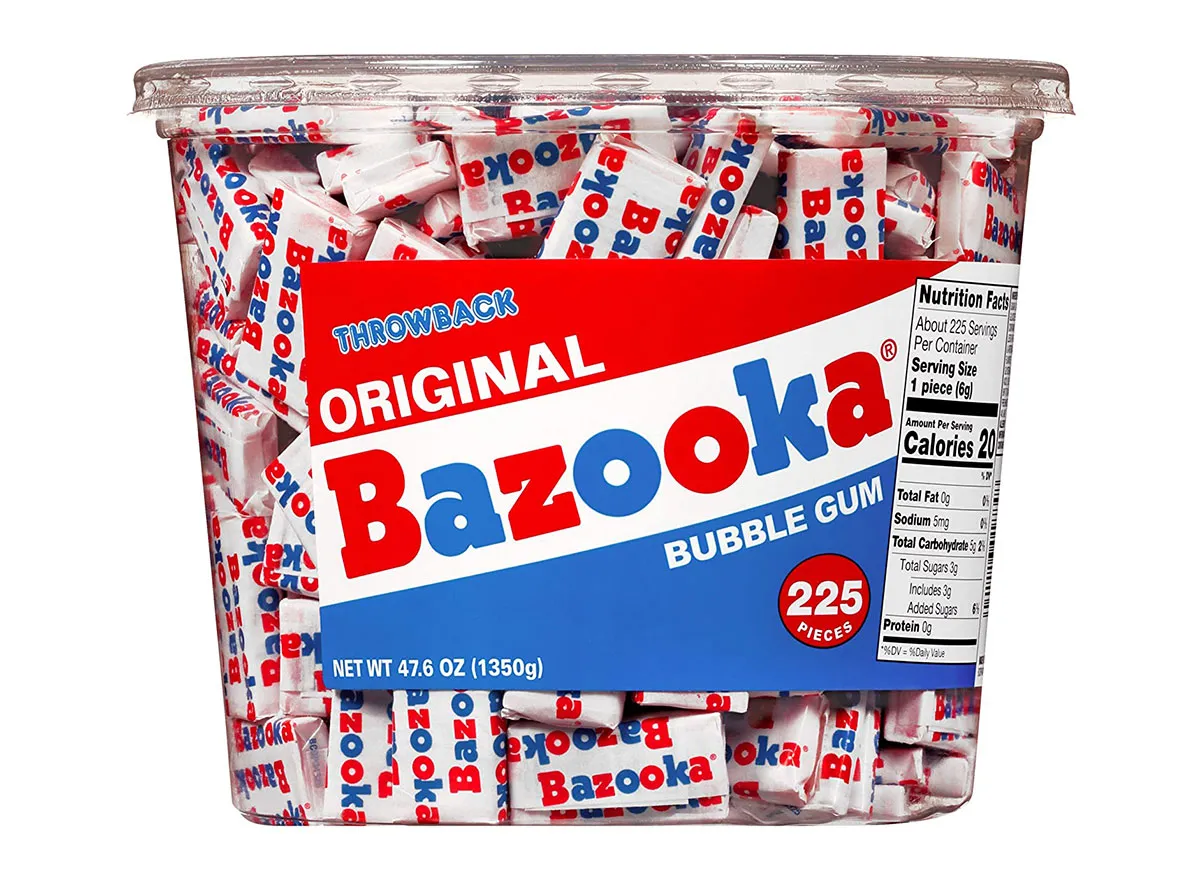
Two shades of artificial red color are added to lend the salmon hue to this sugar- and syrup-sweetened gum. Titanium dioxide and BHT are also in the original flavor recipe, which are all total no-gos.
Juicy Fruit
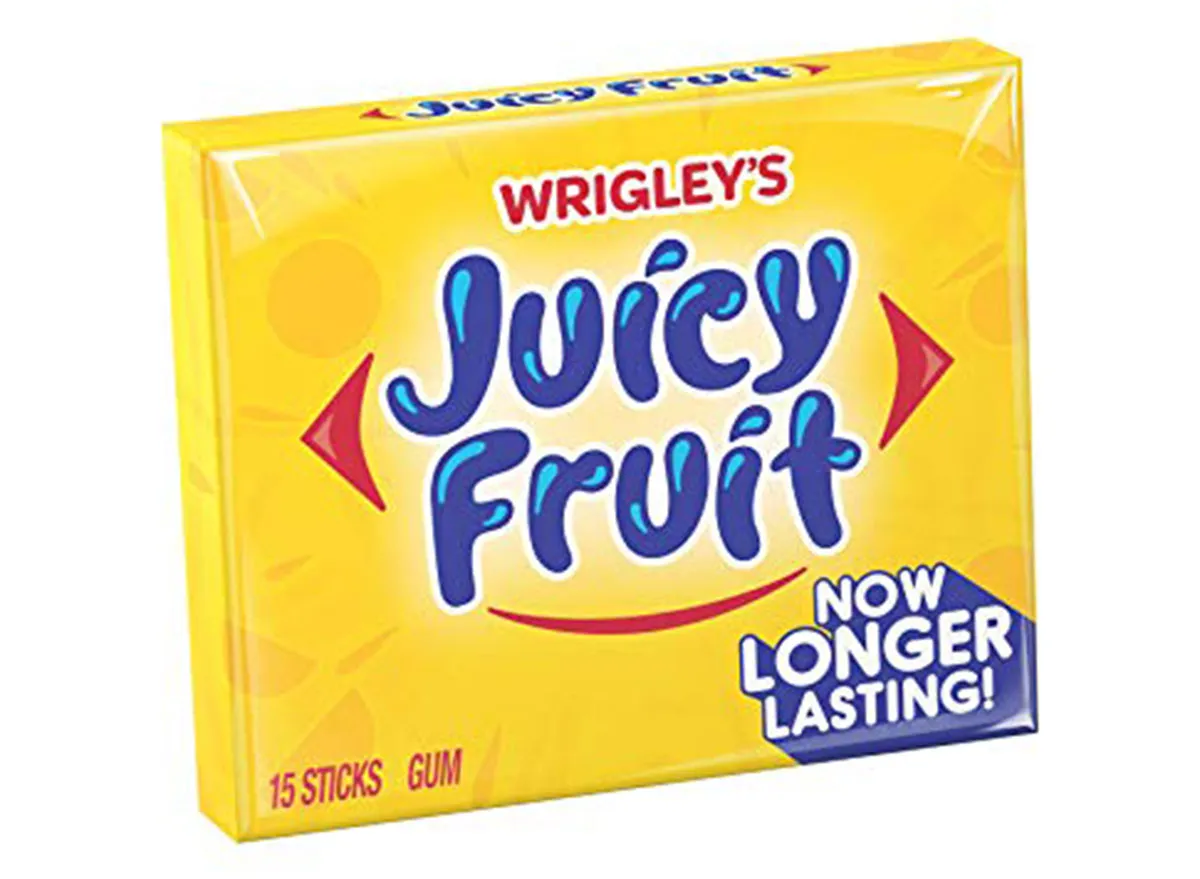
Added colors, BHT, and oodles of different sweeteners are hidden in this gum that's sneakily named after produce. There are no signs of actual fruit here!
Wrigley's Spearmint
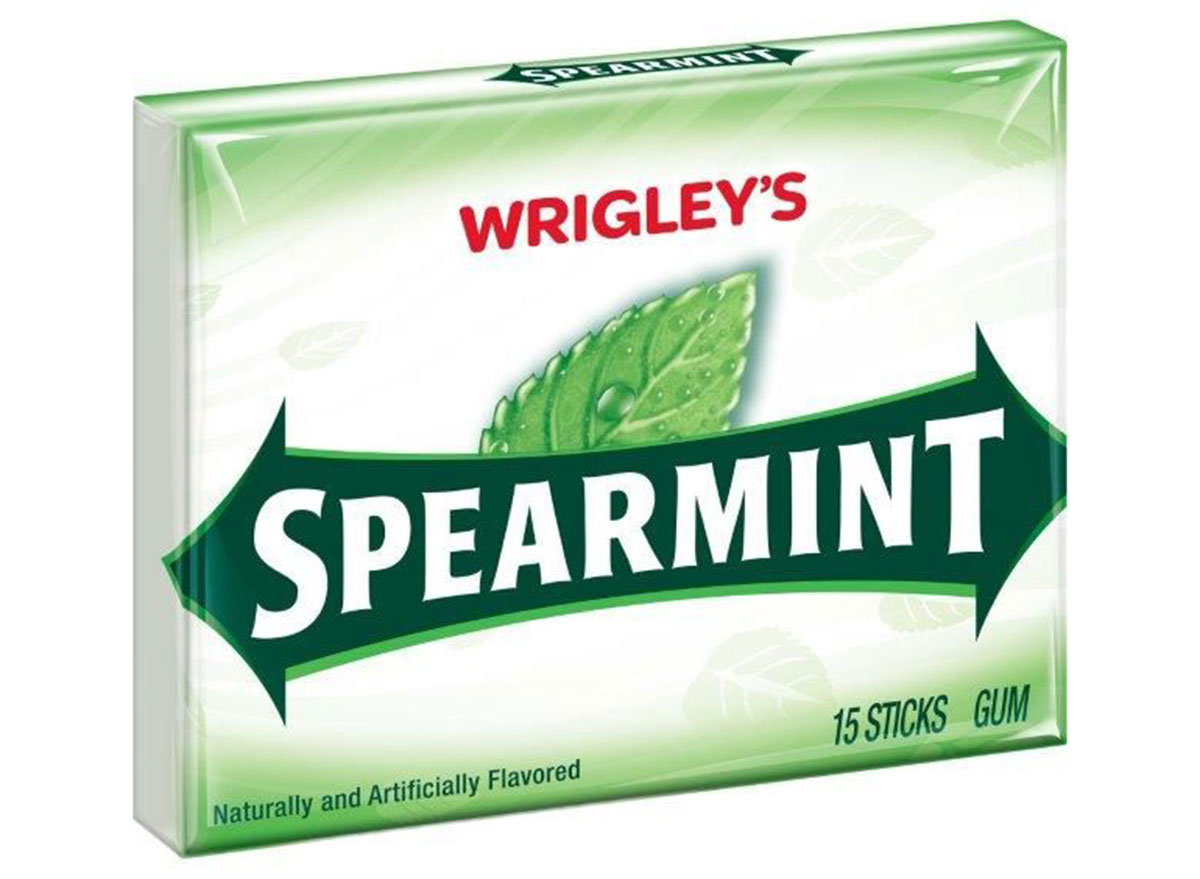
Alongside sugar, aspartame and acesulfame K sweeten Wrigley's. "I'd like my clients who chew a lot of gum to be aware of how much sugar or sugar alcohols they're consuming. I do not recommend chewing gum on an empty stomach, since that's a recipe for giving yourself a stomachache," Hyman says.
5 Gum Peppermint Cobalt
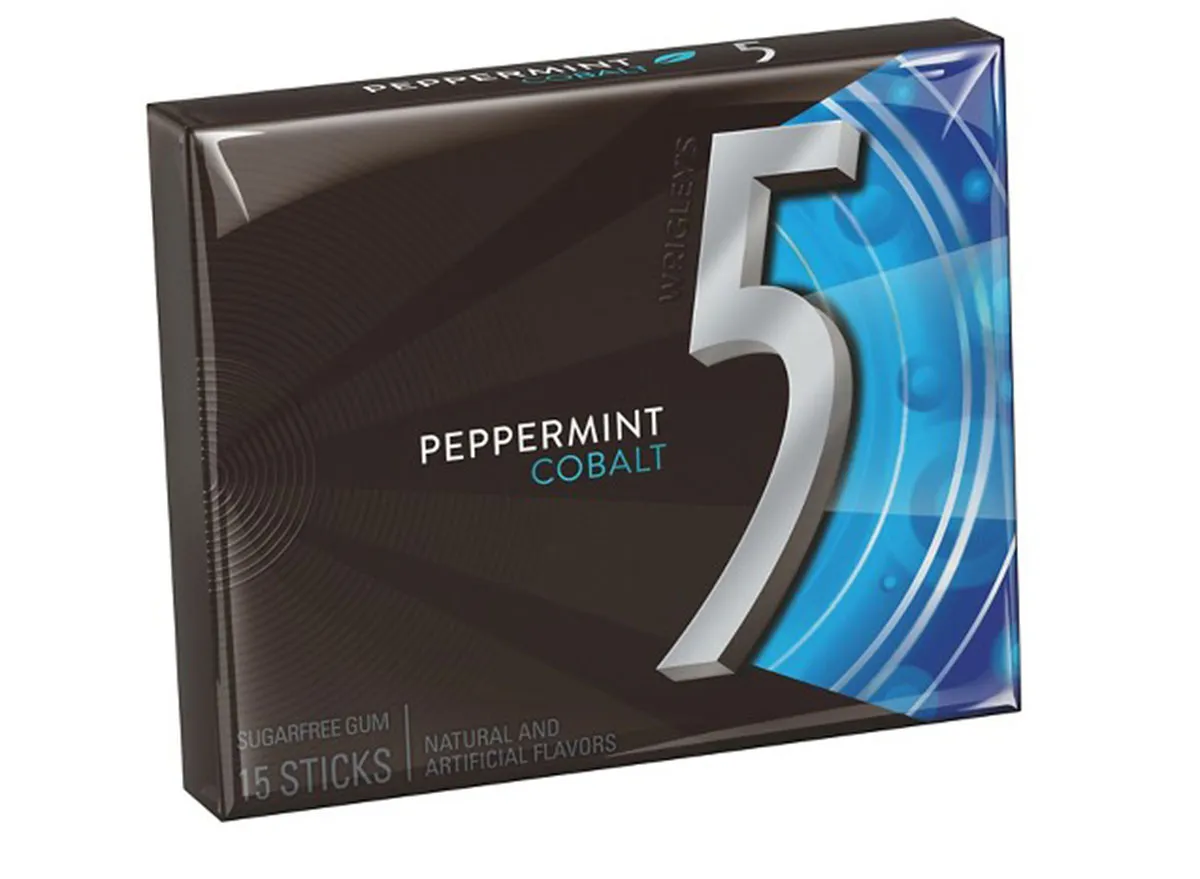
Five isn't just the name of this gum. It's the number of artificial sweeteners in the recipe: sorbitol, hydrogenated starch hydrolysates, mannitol, aspartame, and acesulfame K. It's safe to say that's simple five too many.
Ice Breakers Ice Cubes Peppermint
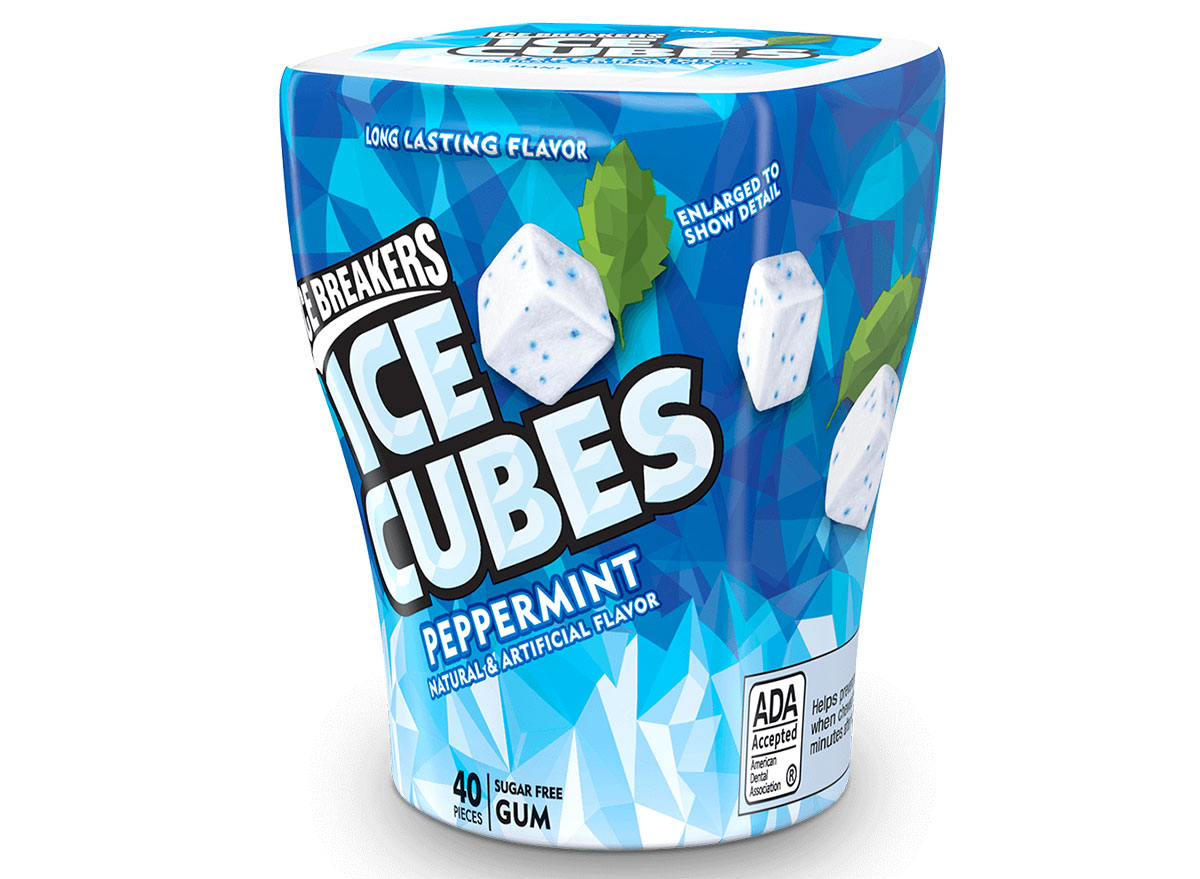
The ingredient list for Ice Breakers gum is nearly as large as the nutrition facts panel. All those flavor and color additives are a sign you may not want to break the ice (or the seal on the package).
Dentyne Ice Arctic Chill
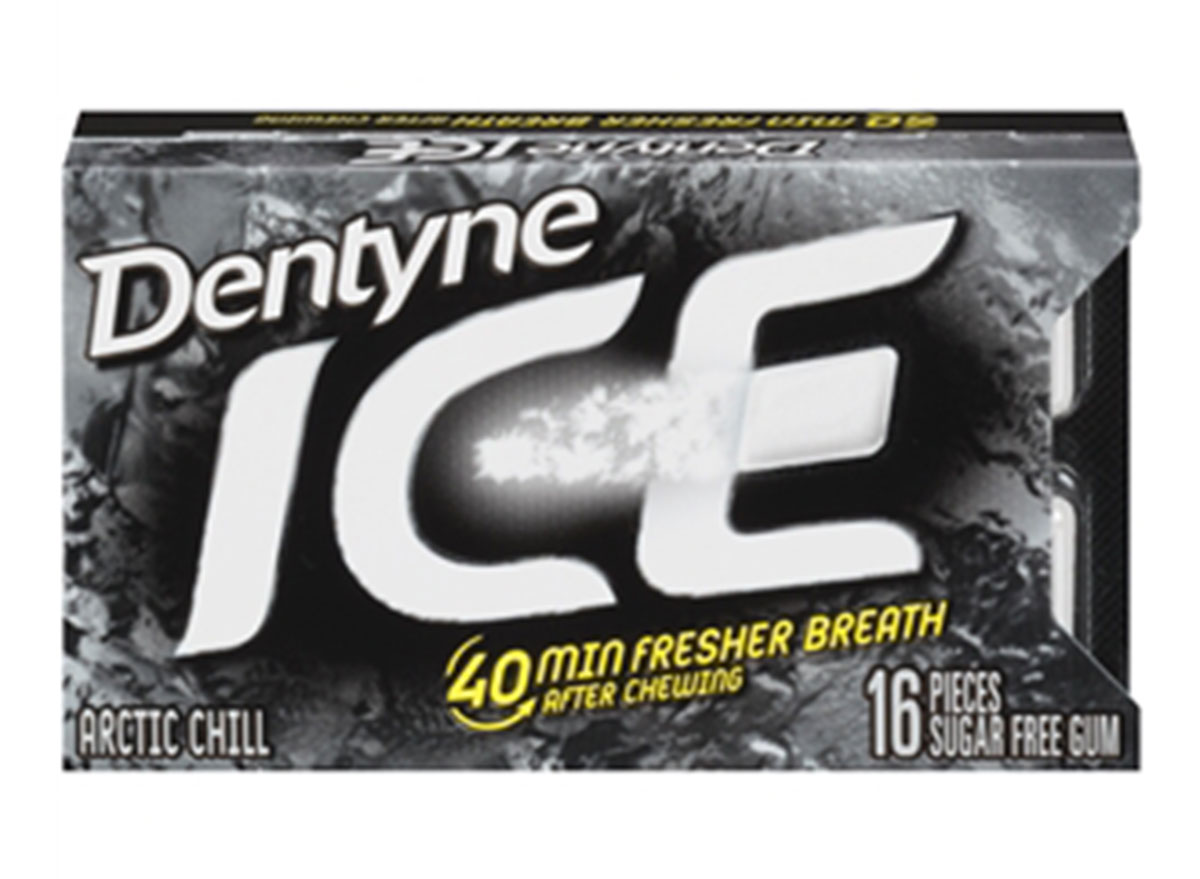
A smattering of synthetic -tols are invited to Dentyne's party: sorbitol, maltitol, and mannitol.
Wrigley's Big Red
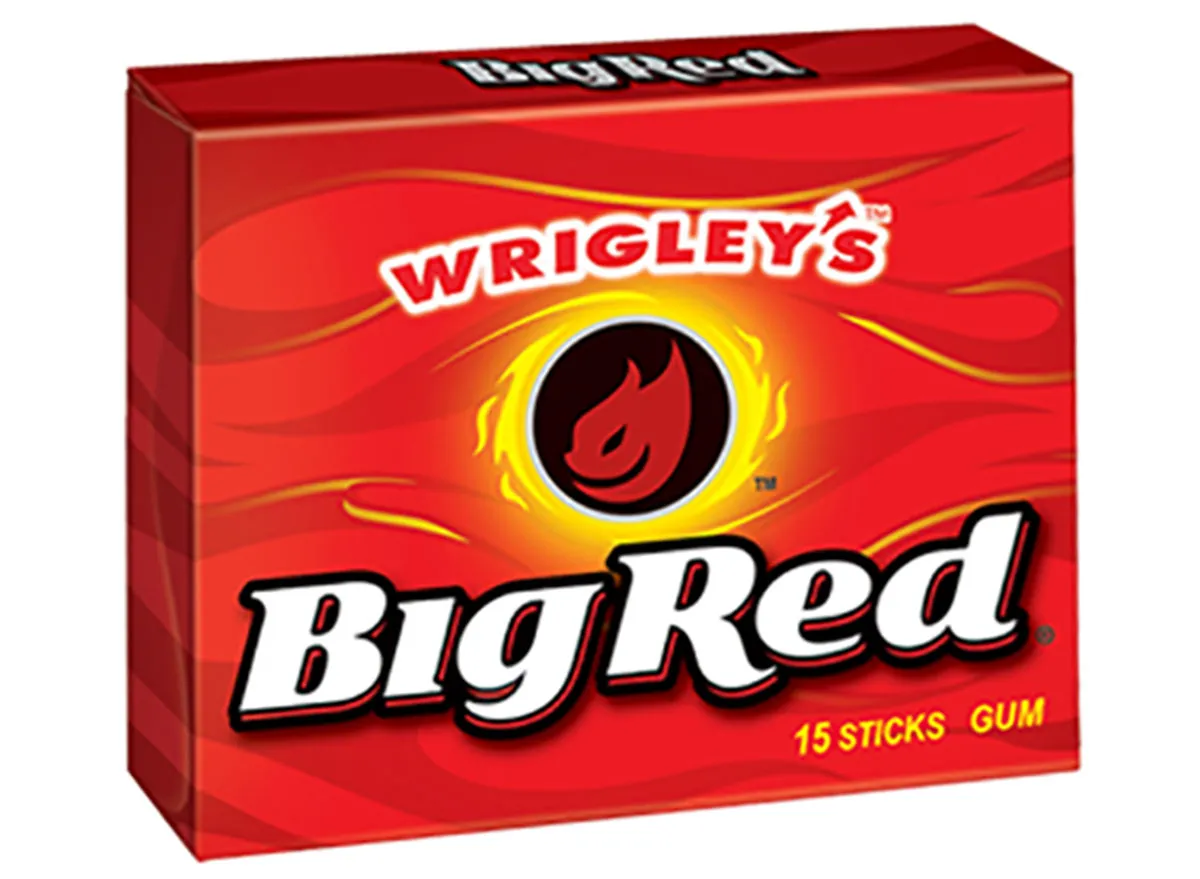
Although it has a relatively short ingredient list, real sugars and artificial colors land Big Red near the middle of the list.
Mentos Pure Fresh Mint
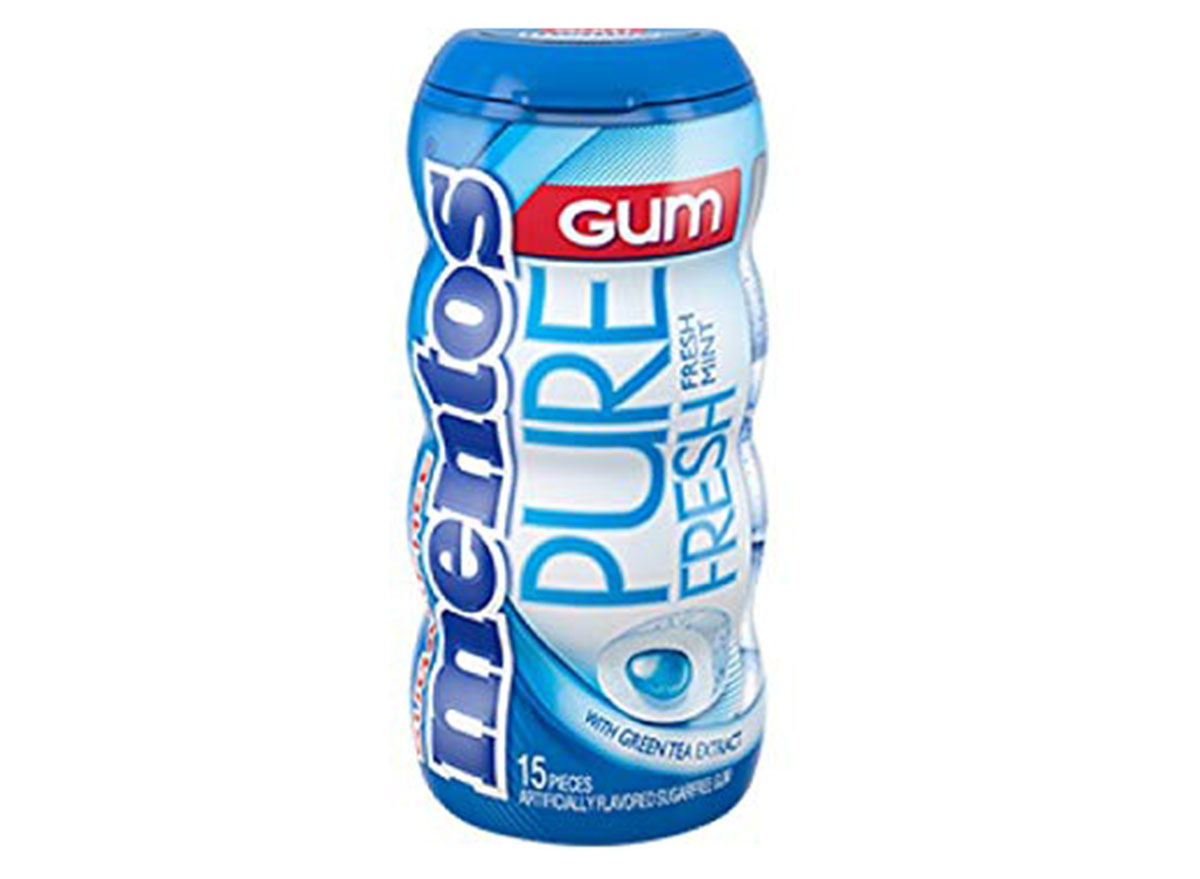
"The freshmaker" is not so "fresh" as the kids say. Hyman's opposed to the artificial flavors, titanium dioxide, artificial sweeteners, artificial colors, and BHA.
Wrigley's Doublemint
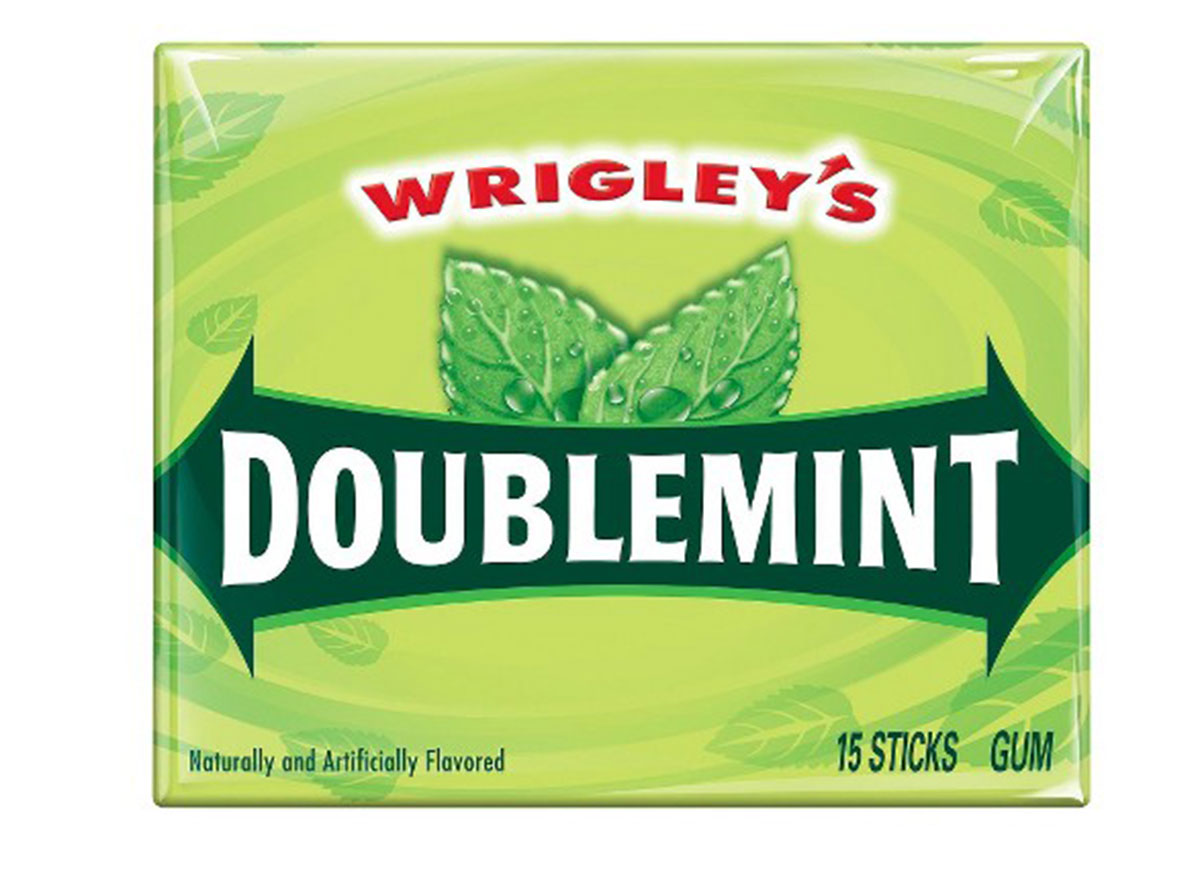
Double the mint; double the sweeteners (artificial and real). Sugar and dextrose add to the calories and carbs, while aspartame and acesulfame K amplify the sugar alcohols.
Wrigley's Winterfresh
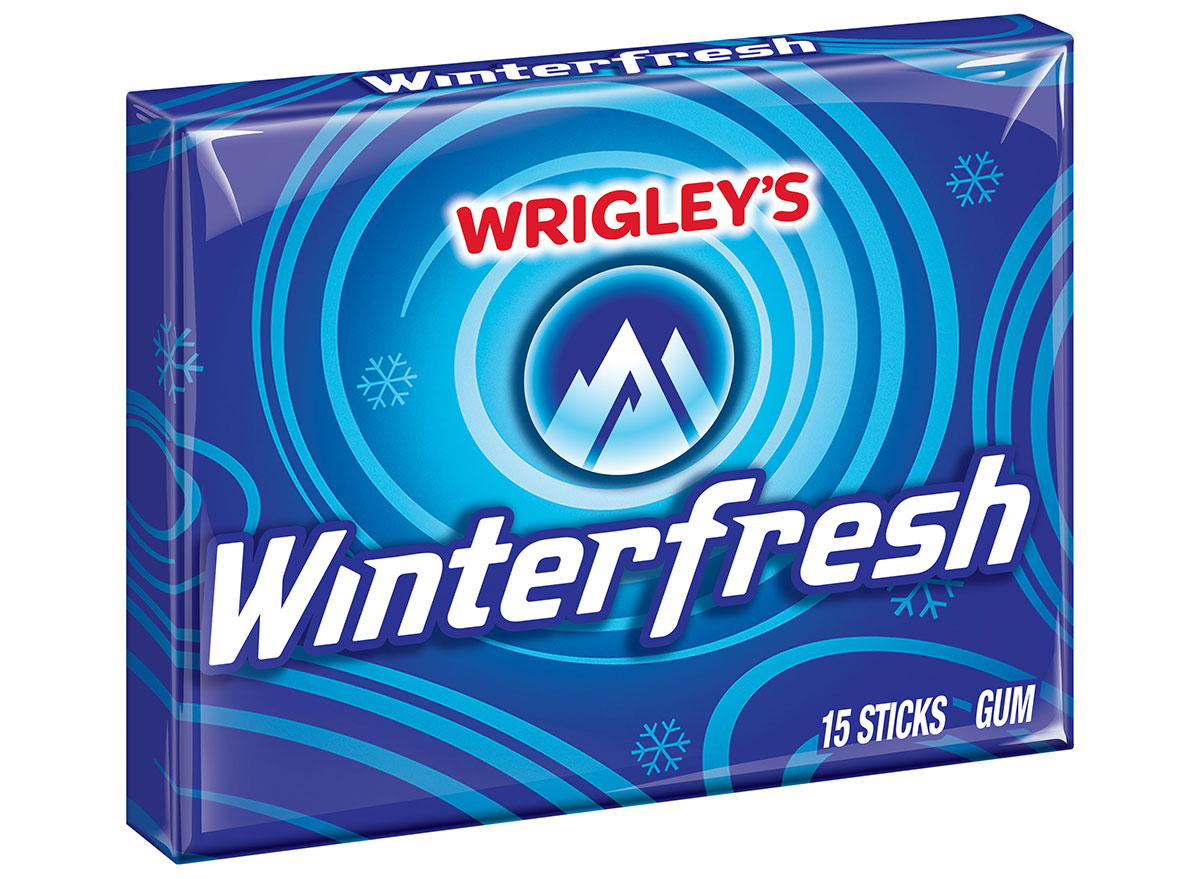
Sodium carboxymethylcellulose is a mouthful—and an ingredient in Winterfresh. It's generally recognized as safe, but fair warning: it can also be found in laxatives and cosmetics.
Extra Spearmint
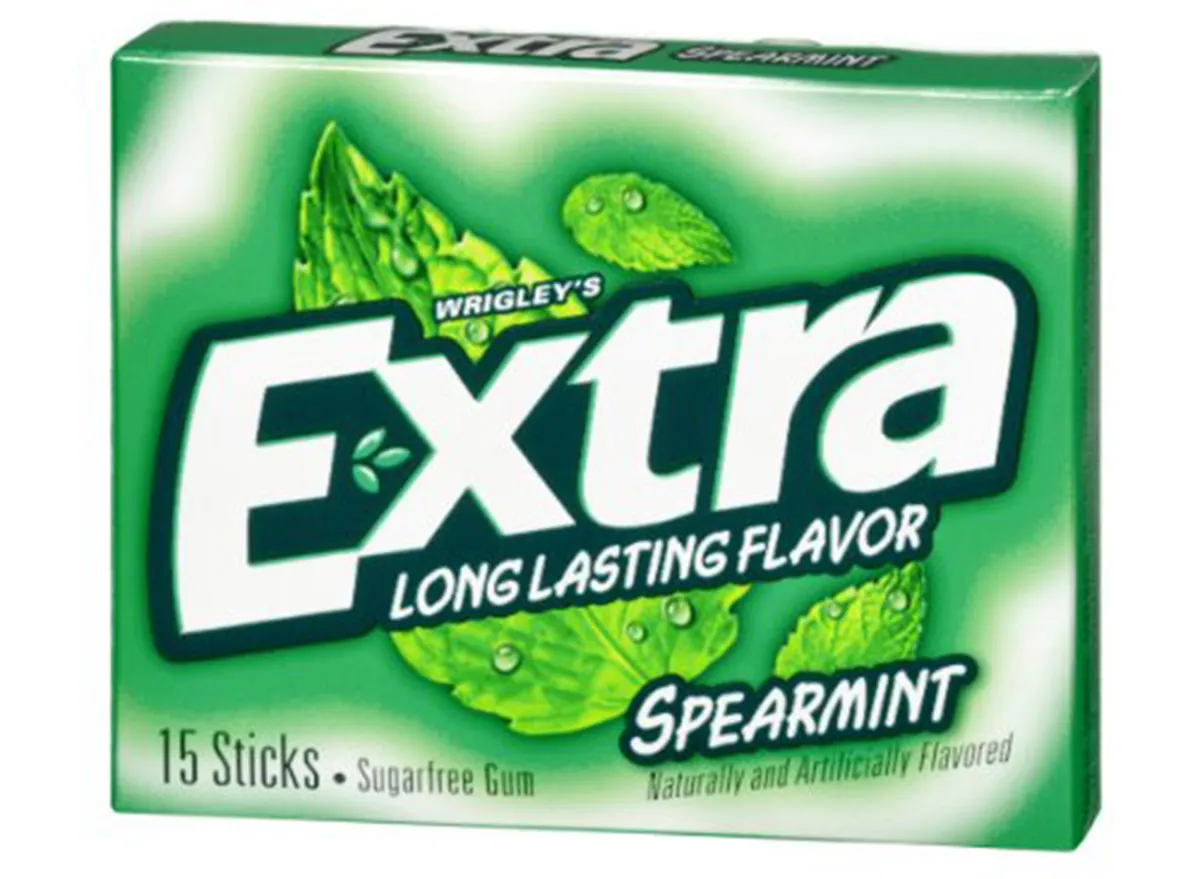
Sorbitol is ingredient number one of Extra.
"To maintain the sweet taste in sugar-free gum, sucrose is often swapped for sugar alcohols such as sorbitol. While the reduction in calories may be of benefit during calorie restriction, sugar alcohols are poorly absorbed in the small intestines and can have a laxative effect if consumed in excess (10+ pieces per day)," says Suzanne Fisher, MS, RD, LDN, founder of Fisher Nutrition Systems in Cooper City, Florida.
Orbit Wintermint
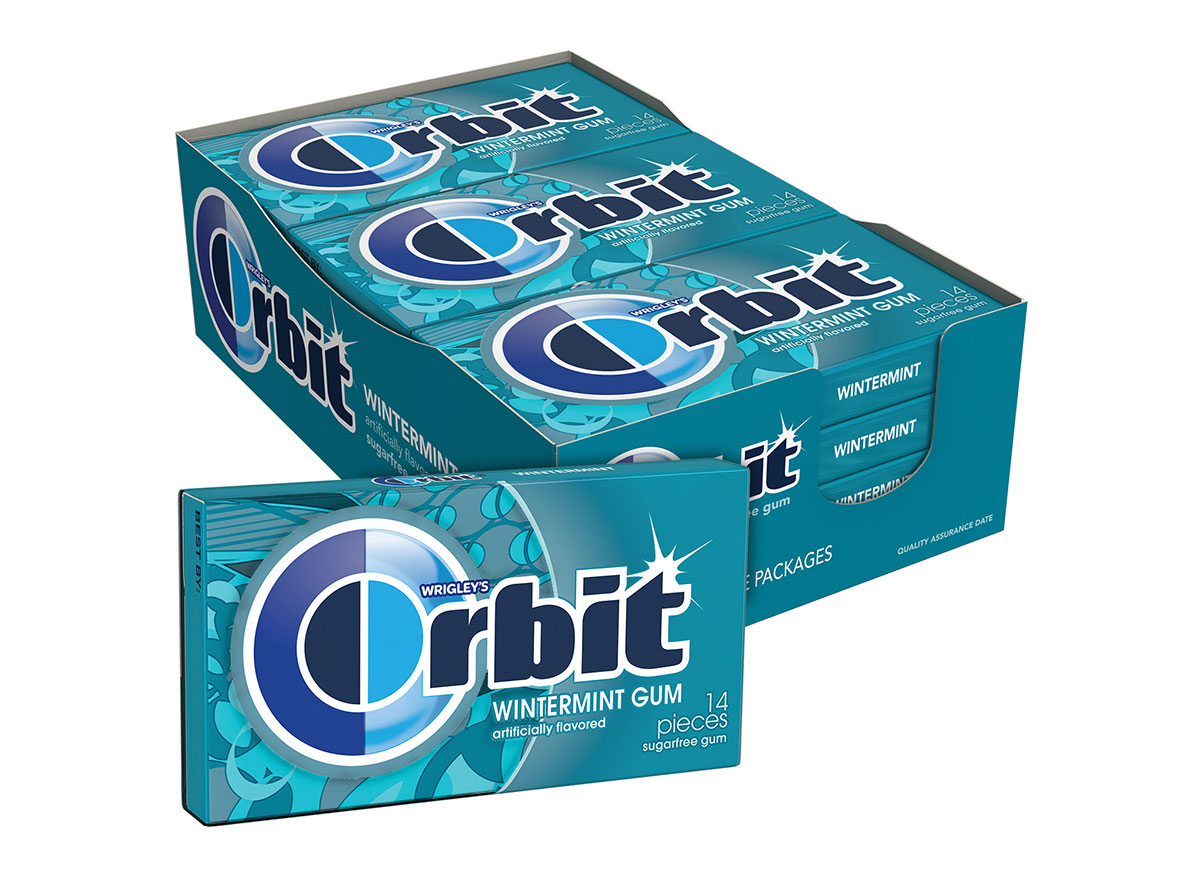
Artificial sweeteners, BHT, and artificial colors as the main offenders in Orbit.
Eclipse Polar Ice Chewing Gum
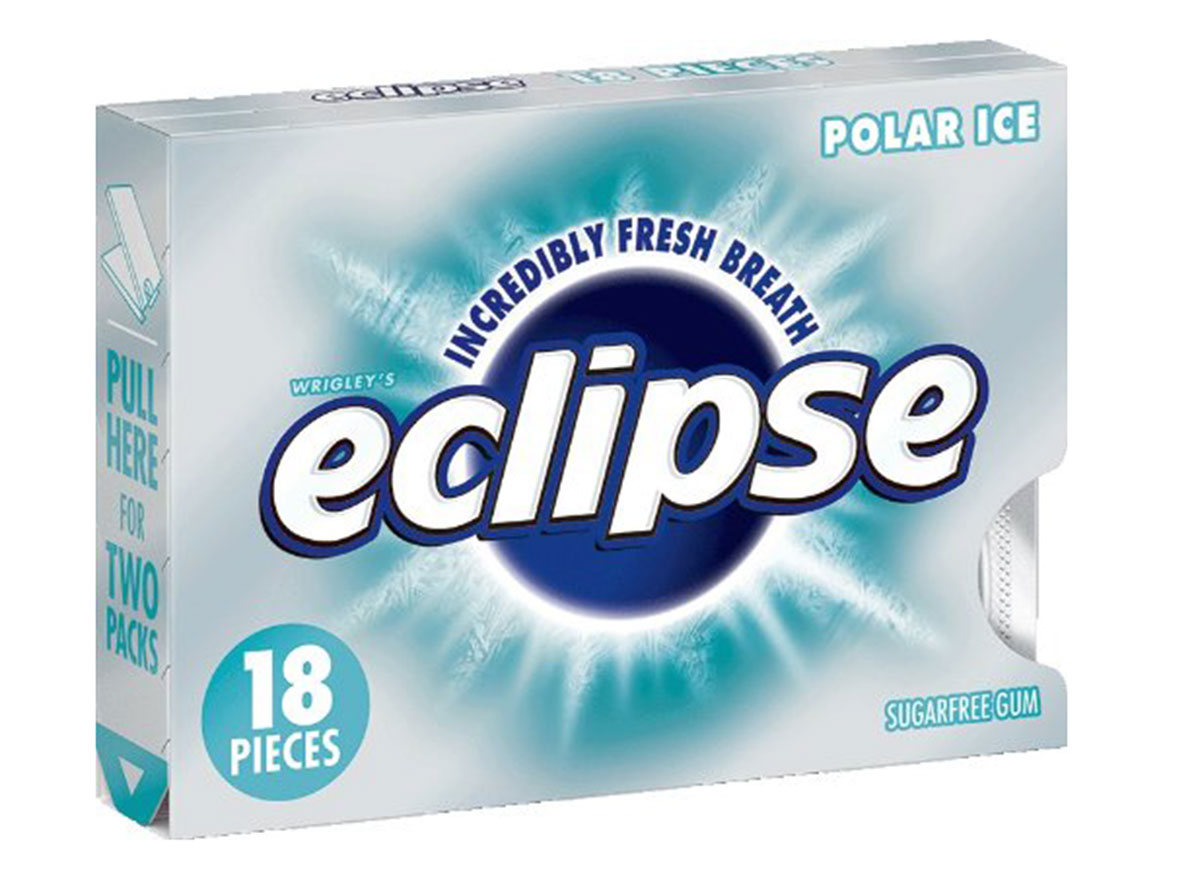
…and the same culprits are at play in Eclipse's icy flavor. So yes, a lot of chewing gum has the same offenders!
Trident Original Chewing Gum
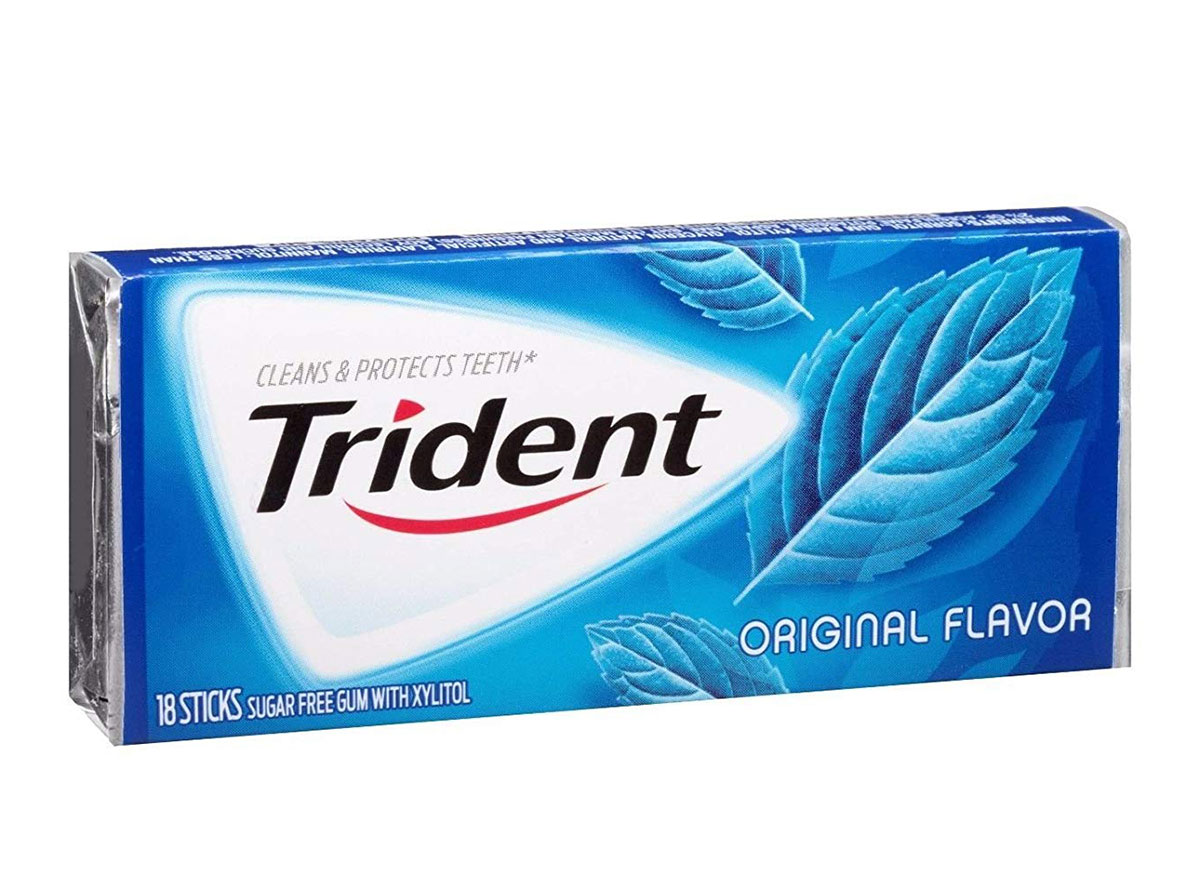
The calorie and carb count is low, true, but that's because nearly every ingredient on Trident's list is an artificial sweetener. Plus, there are six of them…
Xylitol Sweetened Chewing Gum
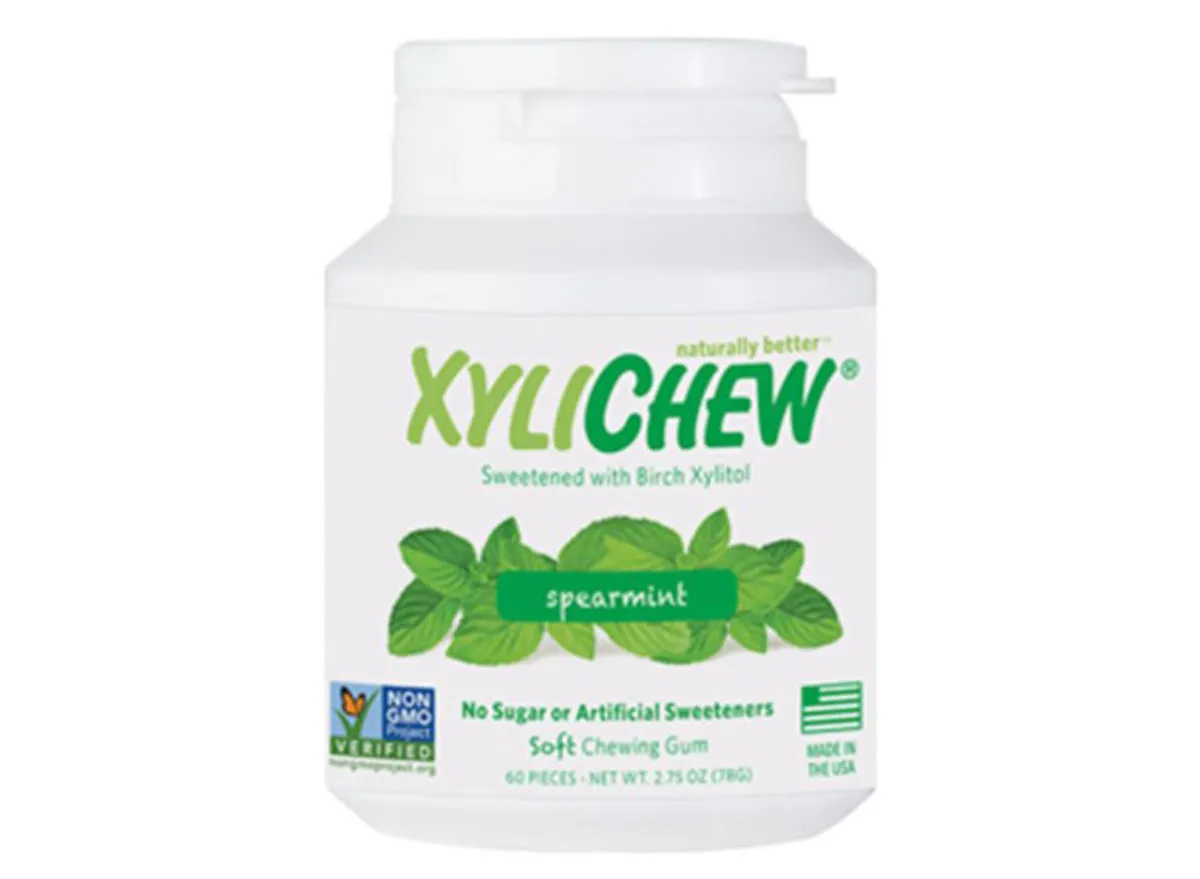
Now we're getting into the good stuff!
See, the benefits of chewing gum outweigh the risks if you shop smart, says David Magid, DMD, a dentist in West Caldwell, New Jersey, who chews sugarless mint gum himself.
"Gum not only can remove food lingering on the teeth from a previous meal or snack, but it also stimulates saliva production. This saliva coats your teeth in calcium and phosphate, which neutralize the acids produced by plaque bacteria. Chewing the right gum can help your body keep your teeth stronger over time," Magid says.
The first ingredient in this gum gets gold marks from Magid. "Xylitol is plant-based sugar that's beneficial for oral health," he says. "Bacteria in the mouth can't digest xylitol, so their numbers decrease. It also prohibits bacteria from sticking to teeth after xylitol is ingested by the bacteria."
The Peelu Co. Peppermint Chewing Gum
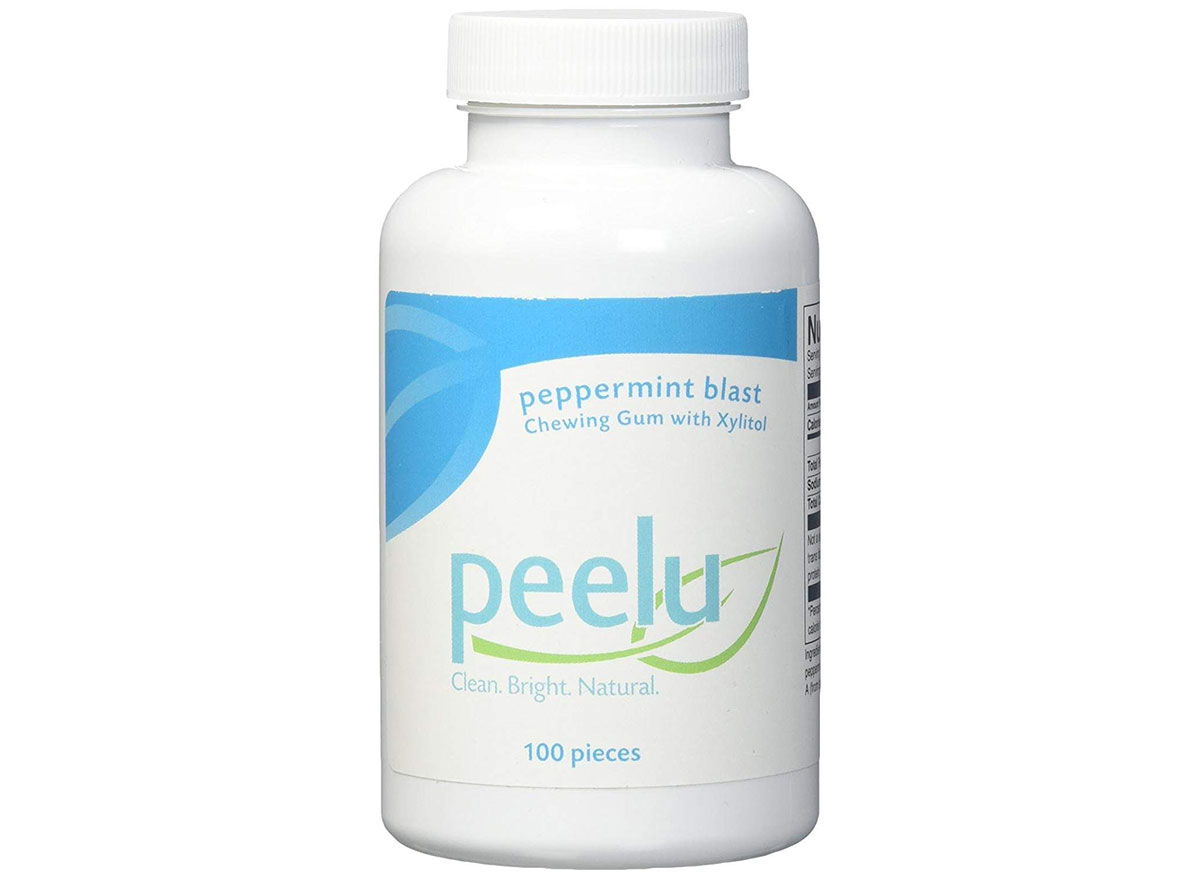
In addition to xylitol, Peelu is made with natural peppermint oil and stevia, which scored near the top of our best-sweetener list.
Pur Coolmint Chewing Gum
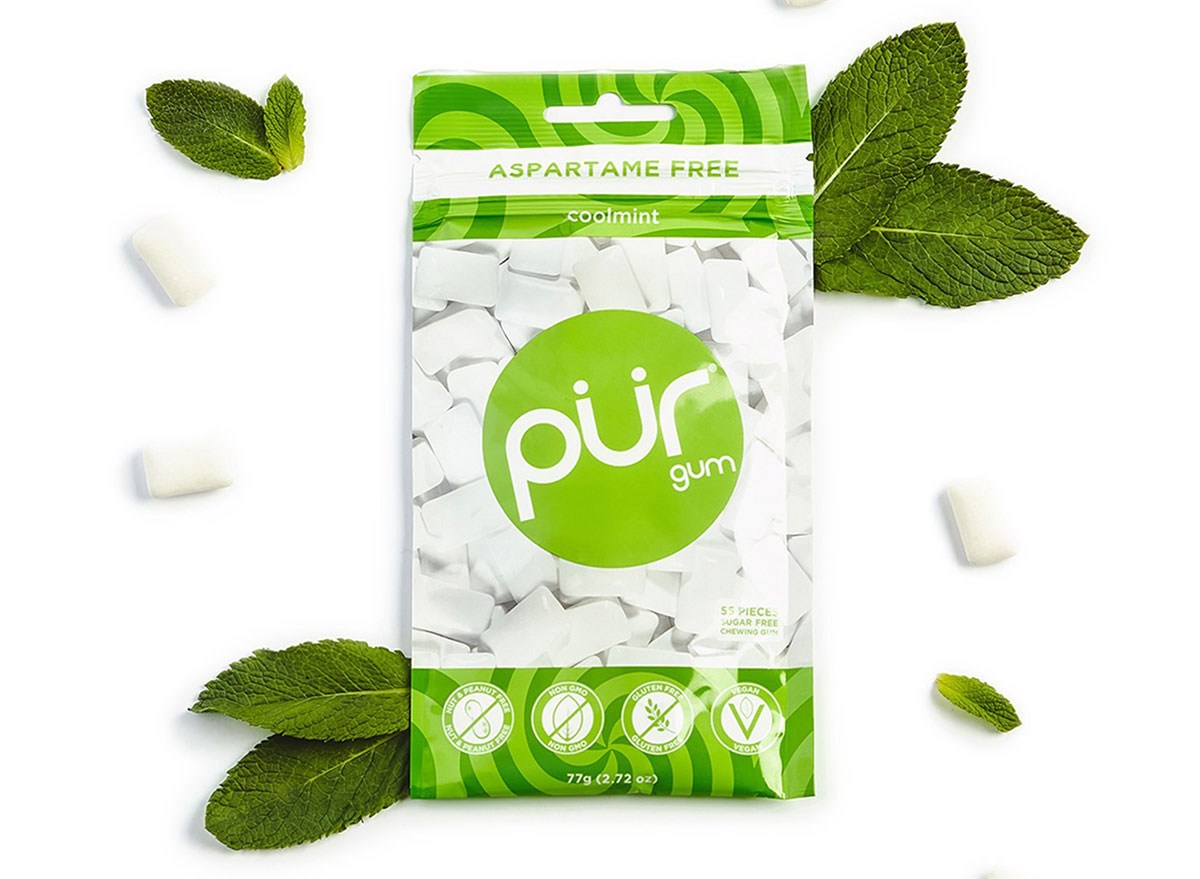
The scariest name on the ingredient list is also in smallest supply: "tocopherols." Never fear: It's a form of vitamin E that actually may lower your risk for certain cancers. This chewing gum may do a lot to help you out long-term!
Glee Peppermint Chewing Gum
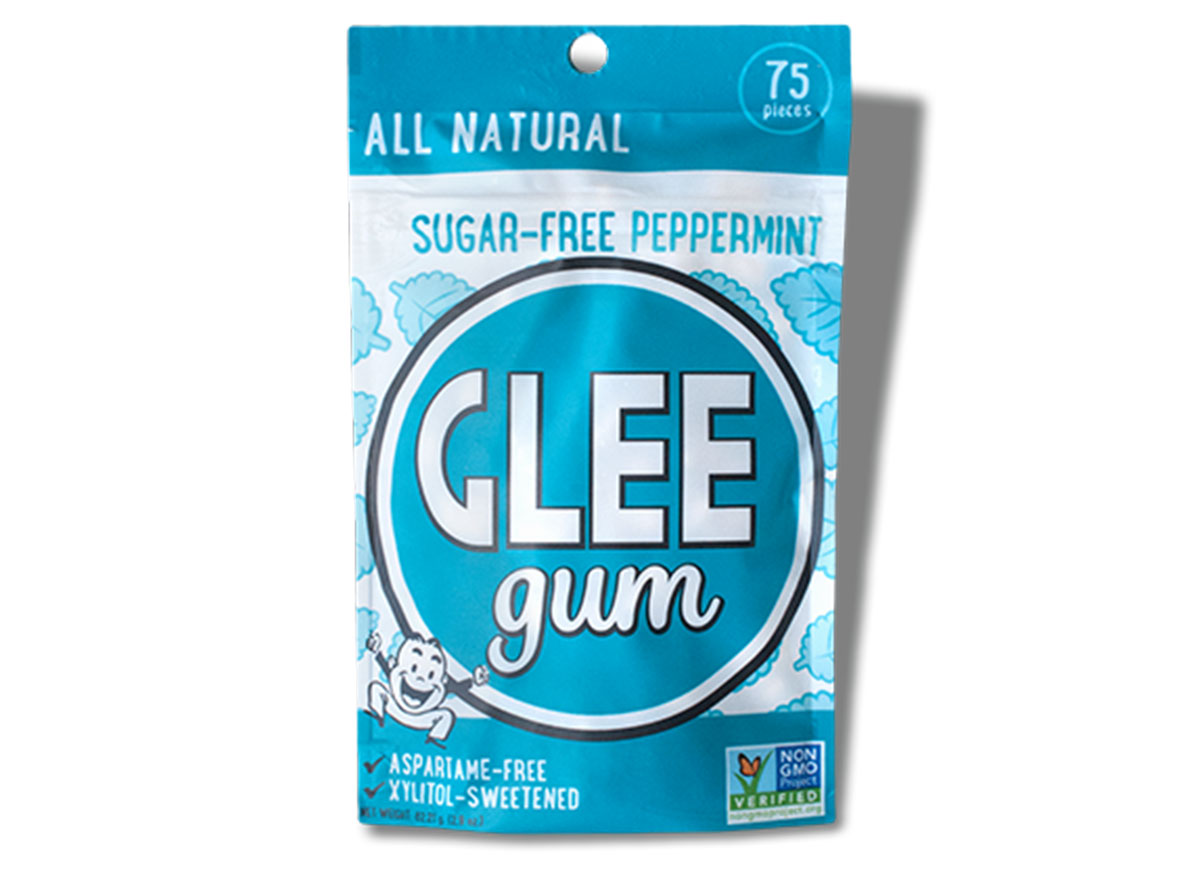
The gum base of this xylitol-sweetened bite includes dehydrated citrus peels! That doesn't mean you can count it as a serving of fruit, but it is a nice all-natural component.
Simply Gum Chewing Gum
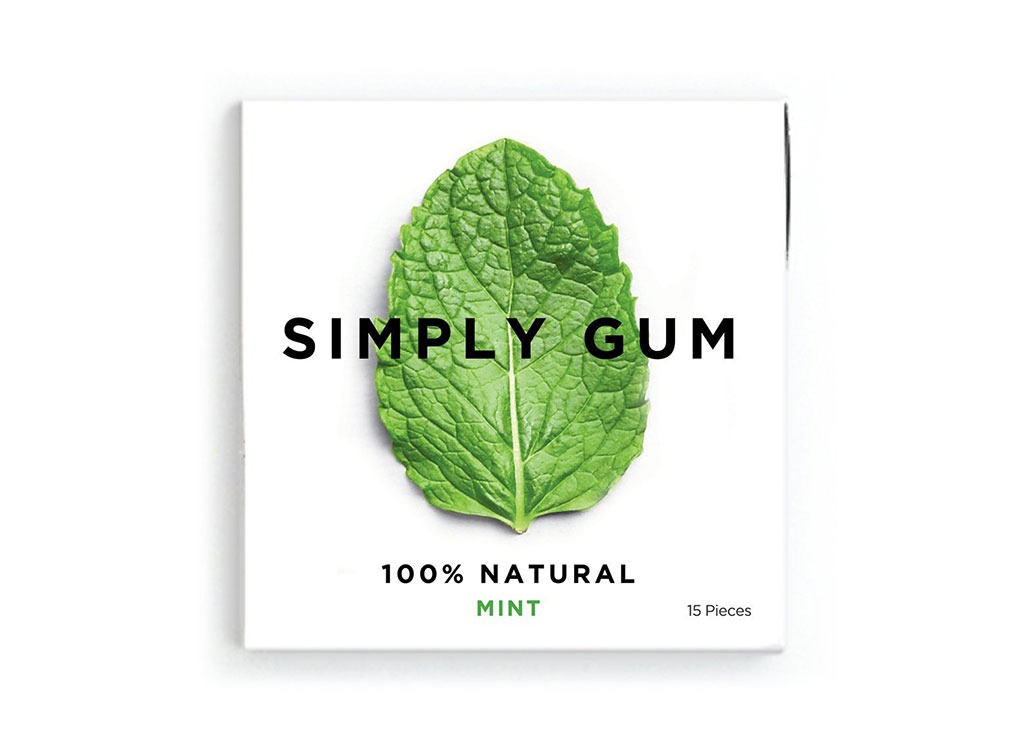
Simple really is best. Flavored naturally and sweetened with raw cane sugar, the ingredient list on this chewing gum is dentist-approved.
"The small amount of organic raw cane sugar for sweetness may be easier for some to digest than gums made with xylitol," Hyman says.
Now, you're armed with all the information you need to confidently tackle the candy aisle next time you're in the market for a new chewing gum that won't hurt your waistline.
Read more:
This Is What Swallowing Chewing Gum Does to Your Body, Says Science

